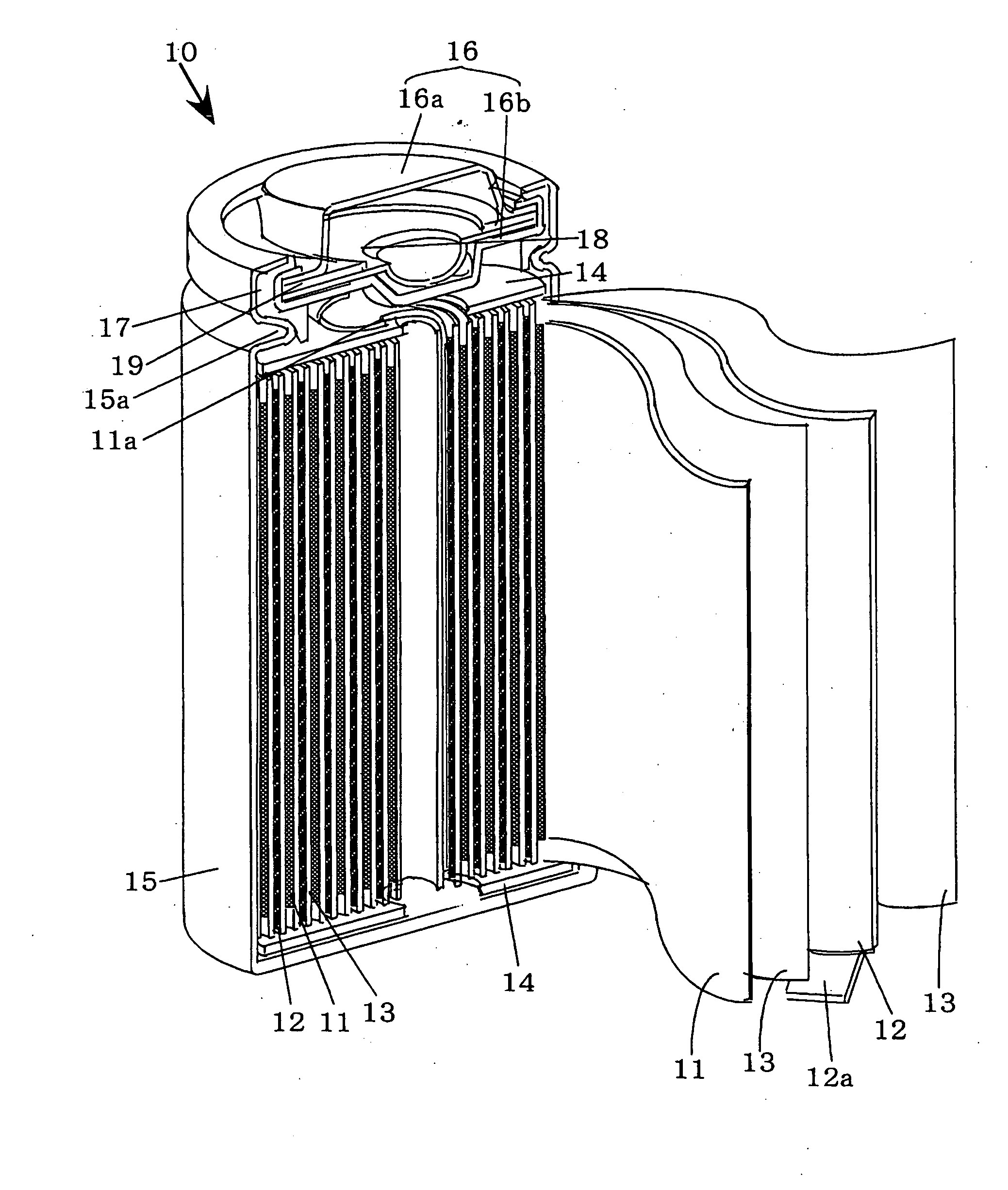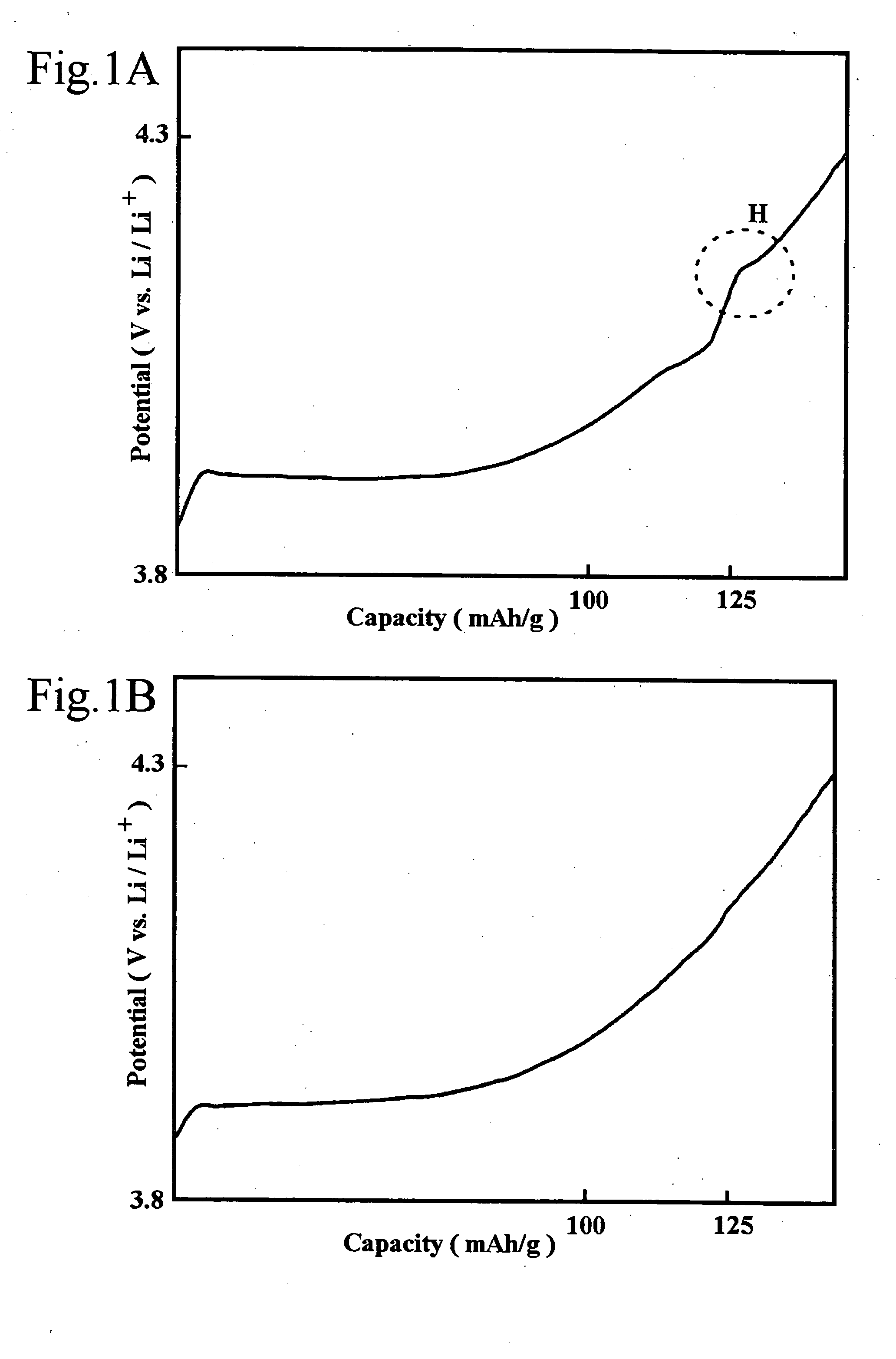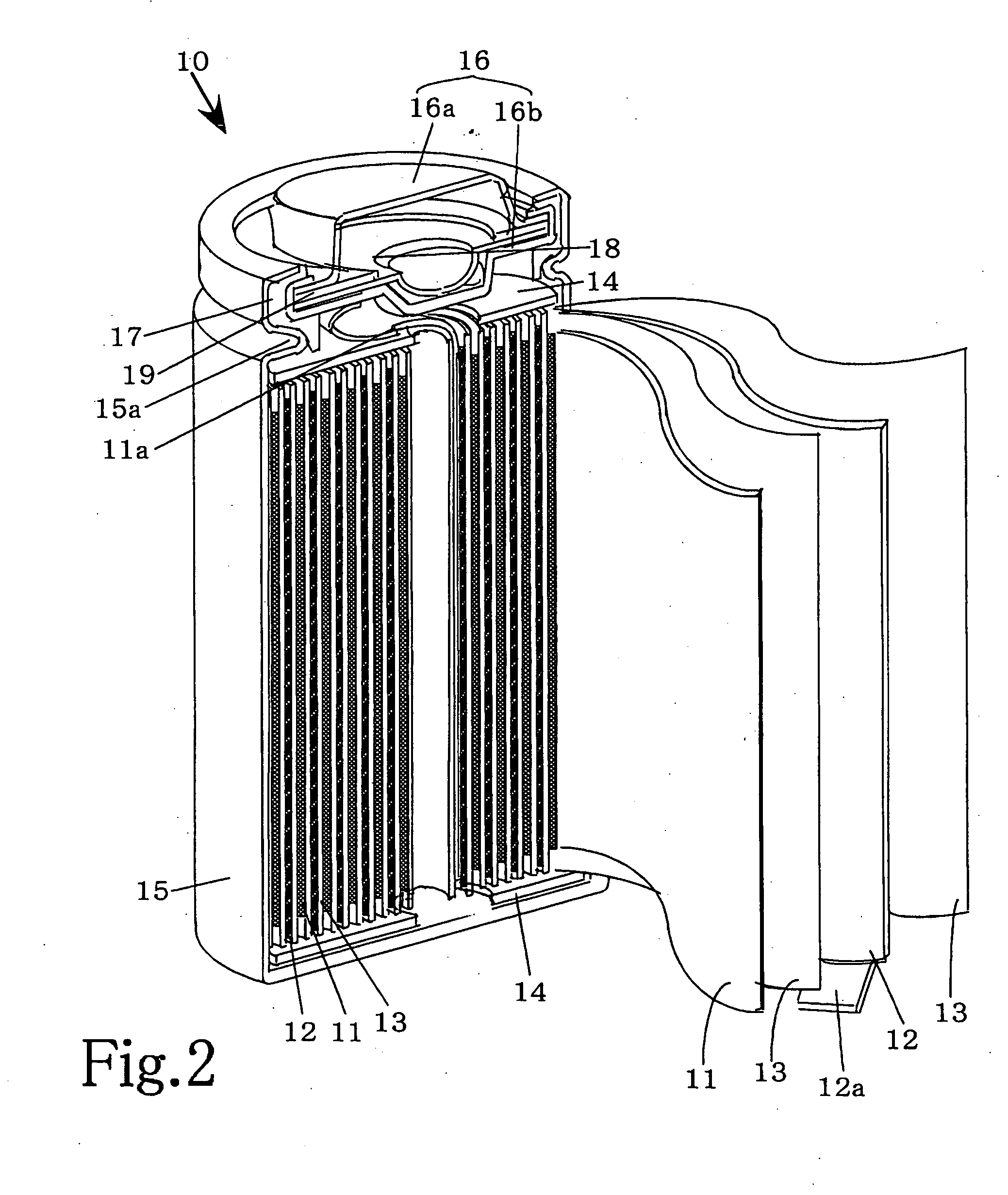Non-aqueous electrolyte secondary battery and method of manufacturing the same
a technology of non-aqueous electrolyte and secondary batteries, which is applied in the direction of non-aqueous electrolyte cells, sustainable manufacturing/processing, cell components, etc., can solve the problems of no improvement in performance characteristics such as security performance or charging/discharging cycle performance, and achieve excellent thermal stability, improved charging/discharging cycle characteristics, and high safety
- Summary
- Abstract
- Description
- Claims
- Application Information
AI Technical Summary
Benefits of technology
Problems solved by technology
Method used
Image
Examples
Embodiment Construction
[0020] The preferred embodiments of the present invention will be described with reference to FIGS. 1A ,1B and 2. However, the present invention is not restricted to such embodiments as it may be modified or changed appropriately without departing from the gist of the invention. FIGS. 1A and 1B represent graphical charts of positive electrode charge curves and FIG. 2 is a partially cutaway perspective view schematically showing the main portion of a non-aqueous electrolyte battery according to the present invention in a state cut along the longitudinal direction.
[0021] 1. Preparation of the Positive Electrode
[0022] (1) Preparation of a Zr and Mg added cobalt composite oxide
[0023] First, predetermined amounts of zirconium sulfate (Zr(SO4)2) and magnesium sulfate (MgSO4) were added to a cobalt sulfate (CoSO4) solution, after which the zirconium (Zr) and magnesium (Mg) were coprecipitated during synthesis of the cobalt carbonate (CoCO3) by adding sodium hydrogencarbonate (NaHCO3). T...
PUM
| Property | Measurement | Unit |
|---|---|---|
| charge capacity | aaaaa | aaaaa |
| particle diameter | aaaaa | aaaaa |
| thickness | aaaaa | aaaaa |
Abstract
Description
Claims
Application Information
 Login to View More
Login to View More - R&D
- Intellectual Property
- Life Sciences
- Materials
- Tech Scout
- Unparalleled Data Quality
- Higher Quality Content
- 60% Fewer Hallucinations
Browse by: Latest US Patents, China's latest patents, Technical Efficacy Thesaurus, Application Domain, Technology Topic, Popular Technical Reports.
© 2025 PatSnap. All rights reserved.Legal|Privacy policy|Modern Slavery Act Transparency Statement|Sitemap|About US| Contact US: help@patsnap.com



